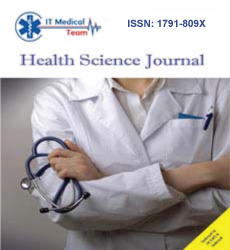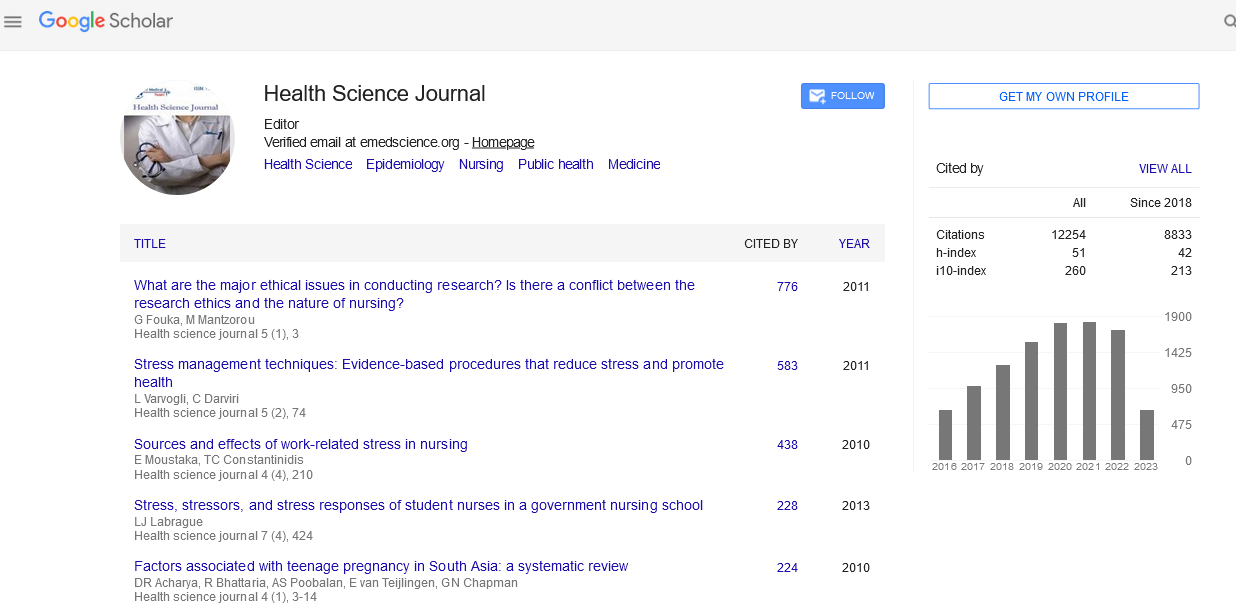Editorial - (2025) Volume 19, Issue 1
Microbial Resistance Mechanisms in Nosocomial Infections: A Study of Hospital-Acquired Pathogens and Their Impact on Treatment Strategies
Sarah Elizabeth Davis*
Department of Health Science, University of Adelaide, Australia
*Correspondence:
Sarah Elizabeth Davis, Department of Health Science, University of Adelaide,
Australia,
Email:
Received: 01-Jan-2025, Manuscript No. Iphsj-25-15520;
Editor assigned: 04-Jan-2025, Pre QC No. Iphsj-25-15520 (PQ);
Reviewed: 16-Jan-2025, QC No. Iphsj-25-15520;
Revised: 21-Jan-2025, Manuscript No. Iphsj-25-15520 (R);
Published:
30-Jan-2025, DOI: 10.36648/1791-809X.19.1.1221
Introduction
Hospital-acquired infections (HAIs), also known as nosocomial infections [1], represent a significant challenge in healthcare settings. These infections occur during the course of a patient’s hospitalization and are associated with high morbidity, mortality, and extended hospital stays. Among the most alarming issues associated with HAIs is the increasing prevalence of multidrug-resistant (MDR) pathogens. These pathogens exhibit resistance to multiple classes of antibiotics, making treatment difficult and complicating infection management. The mechanisms underlying microbial resistance in nosocomial infections are complex and multifactorial, involving both intrinsic and acquired factors that allow bacteria to evade the effects of antimicrobial agents. This article explores the resistance mechanisms of hospital-acquired pathogens, focusing on their impact on treatment strategies and the urgent need for effective therapeutic interventions [2].
Resistance Mechanisms in Hospital-Acquired Pathogens
Microbial resistance to antibiotics is primarily driven by genetic mutations and horizontal gene transfer. Bacteria can acquire resistance genes through conjugation, transformation, or transduction, enabling them to withstand the effects of antimicrobial agents. Resistance can manifest in various forms, including the production of enzymes that degrade antibiotics, changes in cell wall permeability [3], alterations in drug targets, and the active efflux of antibiotics out of bacterial cells. One of the most prevalent mechanisms of resistance in hospital-acquired pathogens is the production of beta-lactamases, enzymes that break down the beta-lactam ring structure of penicillins and cephalosporins. Extended-spectrum beta-lactamases (ESBLs) and carbapenemases are examples of beta-lactamases that confer resistance to broader ranges of beta-lactam antibiotics, including third-generation cephalosporins and carbapenems. Carbapenem-resistant Enterobacteriaceae (CRE) have emerged as a major concern in healthcare settings, as they are resistant to nearly all available antibiotics, leaving clinicians with few treatment options. Another significant mechanism of resistance involves modifications to the bacterial cell wall, which prevent the effective penetration of antibiotics. In Gram-negative bacteria, such as Pseudomonas aeruginosa and Acinetobacter baumannii, the outer membrane acts as a barrier to many antibiotics. Mutations that reduce the expression of porins [4], proteins that allow antibiotics to enter bacterial cells, can make these pathogens highly resistant to treatment. In addition, efflux pumps, which actively transport antibiotics out of the cell, further contribute to resistance by decreasing intracellular concentrations of the drug. The acquisition of mutations in the target sites of antibiotics also contributes to resistance. For instance, mutations in the penicillin-binding proteins (PBPs) in methicillin-resistant Staphylococcus aureus (MRSA) result in the bacteria’s ability to evade the effects of methicillin and other beta-lactam antibiotics. Similarly, mutations in ribosomal targets can confer resistance to aminoglycosides, while modifications in the quinolone target enzymes can lead to resistance to fluoroquinolones. Resistance in hospital-acquired pathogens is not limited to bacteria; fungi, particularly Candida species, have also shown increasing resistance to commonly used antifungal agents [5], such as fluconazole. Resistance mechanisms in fungi often involve the overexpression of efflux pumps, mutations in the drug target enzymes, and the alteration of cell membrane composition, making them more resistant to treatment.
Impact of Resistance on Treatment Strategies
The emergence of MDR pathogens in nosocomial infections has profound implications for treatment strategies. The availability of effective antibiotics is increasingly limited [6], leading to a reliance on broad-spectrum agents and the use of more toxic or less well-tolerated drugs. For instance, in the case of CRE infections, the use of colistin, an old and nephrotoxic antibiotic, has been recommended as a last-resort treatment. However, the potential for significant side effects and the development of further resistance to colistin underscore the need for alternative therapeutic options. The rise of multidrug resistance also complicates the treatment of other hospital-associated infections, including pneumonia, bloodstream infections, and surgical site infections. Pathogens such as MRSA, vancomycin-resistant Enterococcus (VRE), and carbapenem-resistant Klebsiella pneumoniae have become increasingly common causes of these infections, and their resistance profiles limit the effectiveness of standard treatment regimens. The growing need for novel antibiotics has spurred research into new drug classes, but the slow pace of development and the high cost of bringing new drugs to market leave healthcare systems with limited options. In response to the increasing resistance of nosocomial pathogens, clinicians have had to adopt more aggressive infection control measures, such as the use of combination therapy and antimicrobial stewardship programs. Combination therapy, which involves using two or more antibiotics with different mechanisms of action, is often employed to overcome resistance and enhance the effectiveness of treatment. However, this approach also carries risks, including the potential for drug interactions, toxicity, and further resistance development. Antimicrobial stewardship programs, aimed at optimizing the use of antibiotics and minimizing unnecessary prescriptions, have become essential in controlling the spread of resistant pathogens in healthcare settings. Despite these efforts, the challenge of managing MDR hospital-acquired infections remains formidable. The overuse and misuse of antibiotics in hospitals contribute to the rapid emergence and spread of resistant strains. Moreover, the global movement of healthcare-associated pathogens further complicates the containment of resistant infections, as they can be transmitted across borders, exacerbating the burden on healthcare systems worldwide.
The Role of Infection Control and Prevention
Effective infection control practices are critical in preventing the spread of resistant pathogens in healthcare settings. Standard precautions, including hand hygiene, the use of personal protective equipment (PPE), and proper cleaning and disinfection of hospital surfaces, remain the cornerstone of infection prevention. However, more specific measures are often required when dealing with MDR pathogens. For example, patients infected with resistant organisms may need to be isolated to prevent transmission to other patients and healthcare workers. Additionally, active surveillance programs that track the prevalence and spread of resistant pathogens can help identify outbreaks early and implement appropriate containment measures. The implementation of strict infection control protocols, along with antimicrobial stewardship, has been shown to reduce the incidence of MDR infections in hospitals. However, the challenge of resistance is ever-evolving, and new strategies are continually being explored. The development of rapid diagnostic tests that can quickly identify resistant pathogens is one promising approach that may help clinicians make more informed treatment decisions, reducing the reliance on broad-spectrum antibiotics and improving patient outcomes.
Future Directions
As the prevalence of MDR hospital-acquired pathogens continues to rise, there is an urgent need for new treatment options and innovative strategies to combat resistance. Research into the mechanisms of resistance and the identification of novel antimicrobial targets are essential for the development of new drugs. In addition to traditional antibiotics, alternative approaches such as bacteriophage therapy, antimicrobial peptides, and immunotherapy are being explored as potential treatments for resistant infections. Furthermore, efforts to prevent the emergence of resistance must include a focus on reducing the environmental contamination of healthcare settings with resistant organisms. Improved infection prevention and control practices, along with enhanced global collaboration and surveillance, are necessary to address the growing threat of antimicrobial resistance in nosocomial infections.
Conclusion
Microbial resistance mechanisms in nosocomial infections present a significant challenge to modern medicine. Hospital-acquired pathogens, particularly those that exhibit multidrug resistance, complicate treatment strategies and lead to poorer patient outcomes. Understanding the mechanisms of resistance is critical in the development of new antibiotics and alternative therapies. While infection control practices and antimicrobial stewardship programs have had some success in limiting the spread of resistant pathogens, more concerted efforts are needed to address this growing problem. The continued research into new therapeutic options and the optimization of infection prevention strategies are essential for mitigating the impact of microbial resistance on hospital-acquired infections and improving patient care.
References
- E Von Mutius (2010) 99th Dahlem conference on infection, inflammation and chronic inflammatory disorders: viruses, autoimmunity and immune regulation. Clin Exp Immunol 160: 113-119.
Google Scholar, Crossref
- Blyth CC, Robertson PW (2006) Anti-streptococcal antibodies in the diagnosis of acute and post-streptococcal disease: streptokinase versus streptolysin O and deoxyribonucleic B.Pathology 38: 152-162.
Indexed at, Google Scholar, Crossref
- Alok A YA (2020) Membranous Nephropathy
Google Scholar
- Fogo AB, Lusco MA, Najafian B, Alpers CE (2015) Atlas of Renal Pathology: Membranous Nephropathy. Am J Kidney Dis 66: 15-17.
Indexed at, Google Scholar, Crossref
- Fresquet M, Rhoden SJ, Jowitt TA, McKenzie EA, Roberts I et al. (2020) Auto antigens PLA2R and THSD7A in membranous nephropathy share a common epitope motif in the N-terminal domain. J Auto immun 106: 102308.
Indexed at, Google Scholar, Crossref
- Wang D, Yang L, Zhang P, LaBaer J, Hermjakob H et al. (2017) AAgAtlas 1.0: a human auto antigen database. Nucleic Acids Res 45: 769-776.
Indexed at, Google Scholar, Crossref
Citation: Davis SE (2024) Microbial Resistance Mechanisms in Nosocomial Infections a Study of Hospital-Acquired Pathogens and Their Impact on Treatment Strategies. Health Sci J. Vol. 19 No. 1: 1221.





